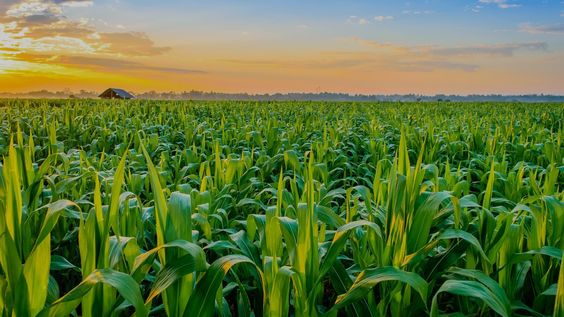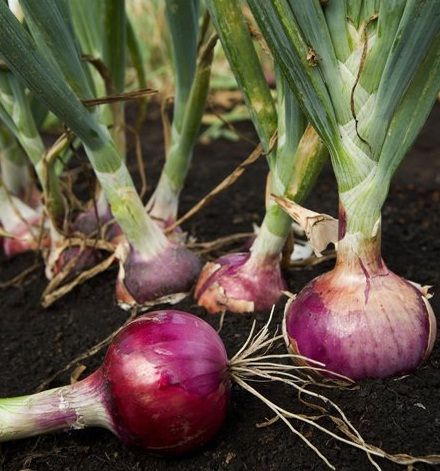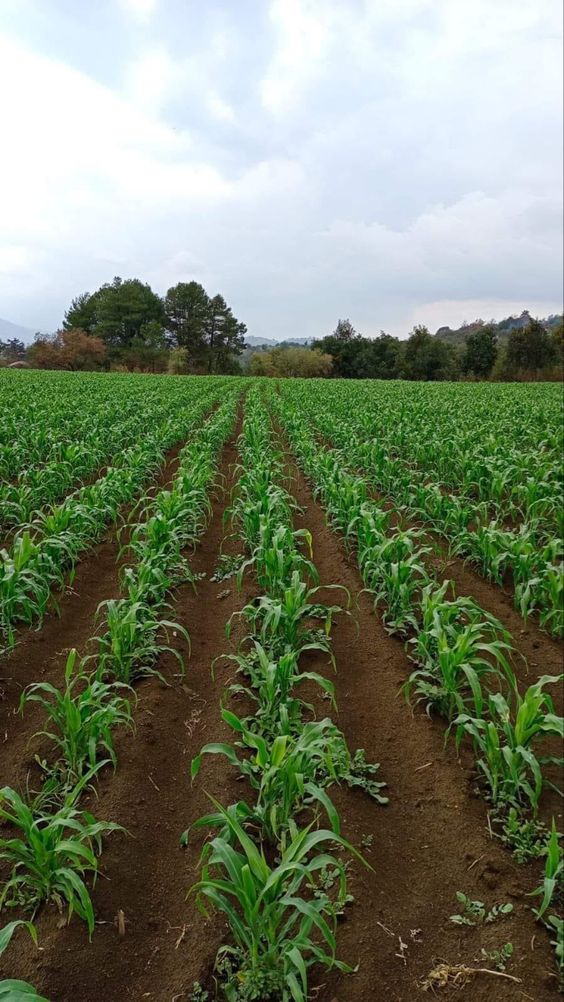Steps in Investment in Agriculture: A Comprehensive Guide to Maximizing Returns
Investment in agriculture can be a lucrative venture, offering a diverse range of opportunities for those looking to diversify their portfolio and contribute to sustainable food production.
As the global population continues to grow, the demand for agricultural products is expected to rise, making this sector an attractive option for investors. However, navigating the complexities of agricultural investment requires careful planning and strategic decision-making.
Contents
- 1 7 Reasons Investment in Agriculture Is Beneficial
- 2 Steps in Investment in Agriculture
- 2.1 1. Market Research and Analysis
- 2.2 2. Define Investment Goals
- 2.3 3. Risk Assessment and Management
- 2.4 4. Selecting the Right Agricultural Sector
- 2.5 5. Due Diligence on Investment Opportunities
- 2.6 6. Forming Strategic Partnerships
- 2.7 7. Implementing Sustainable Practices
- 2.8 8. Technology Adoption and Innovation
- 2.9 9. Monitor and Adapt to Market Dynamics
- 2.10 10. Diversification and Portfolio Management
7 Reasons Investment in Agriculture Is Beneficial
Investing in agriculture offers numerous compelling reasons, driven by its fundamental importance to global food security, economic growth, and environmental sustainability. Below are several key points explaining why agriculture presents an attractive investment opportunity!
1. Growing Global Population
With the world’s population projected to reach 9.7 billion by 2050, there is a corresponding increase in demand for food, feed, fiber, and biofuel. Investing in agriculture allows investors to tap into this growing demand for agricultural products, driven by population growth, urbanization, and changing dietary preferences.
2. Stable and Tangible Asset Class
Agricultural investments typically involve physical assets such as farmland, crops, and livestock, providing a tangible and stable foundation for investment portfolios. Unlike financial assets, agricultural assets are less susceptible to market volatility and economic downturns, making them a reliable hedge against inflation and market fluctuations.
3. Diversification Benefits
Agriculture offers diversification benefits to investors seeking to spread their risk across different asset classes. Agricultural investments have historically exhibited low correlation with traditional financial assets such as stocks and bonds, providing diversification benefits and enhancing portfolio resilience against market volatility.
4. Income Generation and Cash Flow
Agriculture investments can generate consistent income streams through the sale of crops, livestock, and agricultural products. Farmland leases, rental income, and agricultural commodity trading provide avenues for generating regular cash flow, making agriculture an attractive option for investors seeking income-generating assets.
5. Long-Term Capital Appreciation
Farmland and agricultural assets have historically demonstrated appreciation in value over the long term, driven by factors such as increasing land scarcity, rising demand for food, and land development pressures. Investing in agriculture can offer capital appreciation opportunities, providing long-term growth potential for investors.
6. Inflation Hedge
Agricultural investments serve as an effective hedge against inflation, as the value of agricultural commodities tends to rise in periods of inflationary pressure. Farmland, in particular, serves as a natural inflation hedge, as the value of land and agricultural products tends to increase with rising prices and input costs.
7. Environmental and Social Impact
Agriculture plays a crucial role in addressing global sustainability challenges, including climate change mitigation, biodiversity conservation, and rural development. Investing in sustainable agriculture initiatives, such as organic farming, regenerative agriculture, and agroforestry, can generate positive environmental and social impact alongside financial returns.
Steps in Investment in Agriculture
Below are essential steps to consider when you’re interested in the investment in agriculture!
1. Market Research and Analysis
Before diving into agricultural investment, it’s crucial to conduct thorough market research and analysis. This includes understanding current trends, demand-supply dynamics, price fluctuations, and potential risks in the agricultural sector. Identifying promising markets and commodities can help investors make informed decisions and mitigate risks.
2. Define Investment Goals
Clearly defining investment goals is essential for determining the most suitable agricultural investment opportunities. Whether the objective is long-term capital appreciation, income generation, or portfolio diversification, aligning investment goals with the chosen agricultural ventures is crucial for success.
3. Risk Assessment and Management
Agriculture is inherently exposed to various risks, including weather-related events, pests, diseases, and market volatility. Investors must assess and mitigate these risks through strategies such as crop insurance, diversification, and hedging techniques. Developing a robust risk management plan is essential for protecting investment capital and ensuring sustainable returns.
4. Selecting the Right Agricultural Sector
Agricultural investment opportunities span across various sectors, including crop production, livestock farming, agribusiness, and sustainable agriculture initiatives. Investors should carefully evaluate different sectors based on factors such as profitability, scalability, sustainability, and market demand. Choosing the right agricultural sector aligned with investment goals is crucial for maximizing returns.
5. Due Diligence on Investment Opportunities
Conducting thorough due diligence on potential investment opportunities is critical for assessing their viability and potential returns. This involves evaluating factors such as land quality, water availability, infrastructure, regulatory environment, and operational efficiency. Engaging with industry experts, conducting site visits, and reviewing financial projections can help investors make informed investment decisions.
6. Forming Strategic Partnerships
Collaborating with experienced agricultural operators, farmers, and agribusinesses can provide valuable insights and expertise in managing agricultural investments. Strategic partnerships can help investors access specialized knowledge, leverage existing infrastructure, and mitigate operational risks. Building strong relationships within the agricultural community is essential for long-term success.
7. Implementing Sustainable Practices
Sustainable agriculture practices not only contribute to environmental stewardship but also enhance the long-term viability and profitability of agricultural investments. Investors should prioritize sustainability considerations such as soil conservation, water management, biodiversity preservation, and responsible use of inputs. Integrating sustainable practices into agricultural operations can improve resilience to climate change and regulatory challenges.
8. Technology Adoption and Innovation
Embracing technological advancements and innovation is key to enhancing productivity, efficiency, and profitability in agriculture. From precision agriculture and remote sensing technologies to digital farming solutions and blockchain traceability, incorporating cutting-edge technologies can optimize resource utilization and streamline agricultural operations. Investors should stay abreast of technological developments to capitalize on emerging opportunities in the agricultural sector.
9. Monitor and Adapt to Market Dynamics
The agricultural sector is subject to evolving market dynamics influenced by factors such as global trade policies, consumer preferences, and geopolitical developments. Investors should continuously monitor market trends, regulatory changes, and competitive landscapes to adapt their investment strategies accordingly. Flexibility and agility are essential for navigating market uncertainties and maximizing returns in agriculture.
10. Diversification and Portfolio Management
Diversifying agricultural investments across different crops, regions, and production systems can help mitigate risks and optimize returns. Balancing the investment portfolio with complementary assets such as real estate, commodities, and alternative investments can further enhance diversification benefits. Regularly reviewing and rebalancing the investment portfolio based on performance and market conditions is crucial for optimizing risk-adjusted returns.
In conclusion, investment in agriculture offers promising opportunities for investors seeking sustainable returns and positive impact. By following these essential steps, investors can navigate the complexities of agricultural investment, mitigate risks, and maximize long-term profitability. With careful planning, strategic decision-making, and a commitment to sustainability, agricultural investment can be a rewarding journey towards financial prosperity and global food security.




